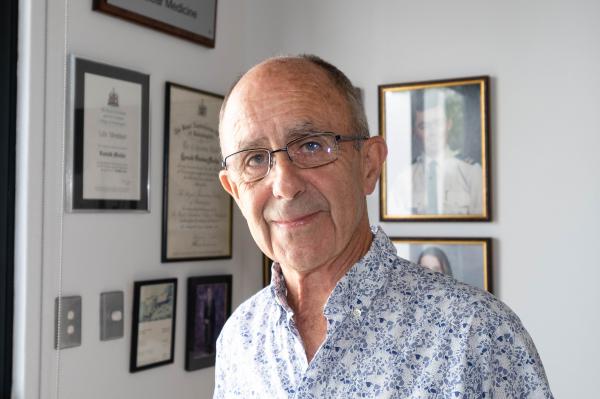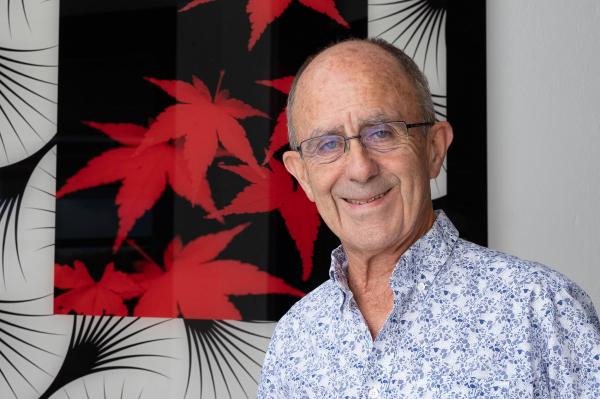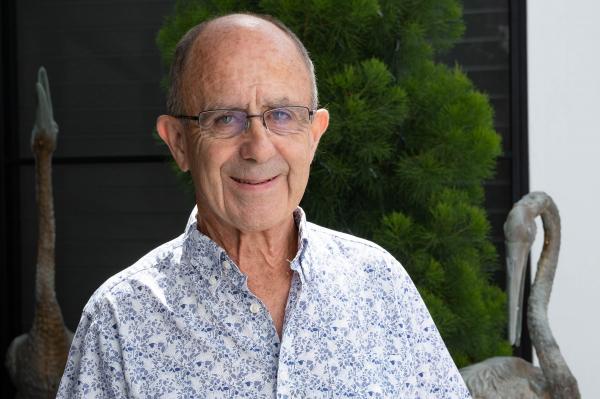Dr Ronald Gordon Meikle OAM was destined for great things when he topped his class in medicine at the University of Otago in Dunedin, New Zealand, and headed off to the Royal Melbourne Hospital to take on radiology.
But it was his ability to envisage the direction in which radiology would take medicine and his courage to act that led to his success in his chosen field and his recognition with a Medal of the Order of Australia in this year’s Australia Day Awards.
“It became very obvious to me that advances in imaging was a game changer,” he said.
“Imaging has charged medicine but a lot of doctors didn’t realise it at the start. It’s changed the mechanism of disease. It’s been really powerful and disruptive, exactly like the virus. It’s changed specialisation from doctors being generalists to being disease specialists and that required significant change.”
Years ago general surgeons did exploratory laparotomies – cutting people open to see what was going on – but with advances in imaging providing rapid diagnosis, that doesn’t happen anymore, he said.
“The speed of these things is unbelievable and the fusing of these images is even more remarkable,” Dr Meikle said. “You can take a CT scan and fuse it with an MRI scan so you can see the whole thing in 3D and that can all happen in a few minutes. So you can imagine the precision with which you can do keyhole surgery has changed dramatically. The area of a tumour, for example, can be defined by the imaging and you can direct your robot to it.”
While advances in radiology have increasingly impacted the diagnosis and treatment of disease Dr Meikle realised changes also had to be made to the way medical services were organised and delivered.
“You can’t expect others to make change that’s ideal for you. You have to make it for yourself and that requires input, investment and integration,” he said.
As a result of the changed model of delivery, specialist medicine has become a commodity and doctors and health care have become a part of a chain of supply.
“A lot of people haven’t realised this. A lot of doctors haven’t realised this. The model has changed and it started to change way back in 1976,” he said.
“The second thing that needed to change was the idea of partnership and the idea of people getting together and buying million dollar machines.”
Dr Meikle needed a business model that was sustainable and able to mitigate risks. With few options available he decided the best way forward for his practice was corporatisation.
“We turned our practice into a company. I subsequently stopped doing clinical radiology and went out and acquired other practices. After putting that together we floated that on The Australian Stock Exchange,” he said. “That then gave us much more access to capital. And our new business plan was basically a patient focused one. The idea was to co-locate within patient care and day surgery.”
Dr Meikle and his partners became involved in day surgery in its infancy in the 1980s. When Box Hill Hospital in Melbourne was just a small suburban hospital he and his partners built a large day surgery consultant complex next to the hospital, attracting cancer services.
“It was great integration of services and care in that spot,” he said. “One of the big problems is patients are fed up with going from one spot to another. They want one-stop shopping and proven quality.
“As I was next to the public hospital it had implications for them. I was invited to go over to the hospital and become Director of Radiology, which I did. I realised they needed a CT scanner and I was a strong driver of that. Gaining a CT scanner changed the hospital from one unable to accept trauma emergency cases.”
Wanting more of an input for radiology in hospital operations Dr Meikle took on the role of chairman of medical staff on the hospital’s medical board. “That helped produce great change and we became a university hospital.”
It was a busy time for Dr Meikle as he introduced new techniques, initiated staff training and grew the business. What was the Victorian Imaging Group became a publicly listed company, IMED, that continues today to perform about a third of the Private imaging nationally. IMED has since been taken over by venture capitalists.
Box Hill Hospital had by then established real tertiary facilities. Dr Meikle put to them that needed MR and nuclear medicine to become a real cancer centre and entered into a commercial contract to provide those services.
The relationship soured when the hospital realised they didn’t have control over the services and sought to regain it.
With Dr Meikle’s wife diagnosed with malignant melanoma the couple decided about 1998 to follow her dream to have a farm and grow alpacas.
“We bought a farm on the side of Mt Cooroy and shifted from Melbourne,” he said.
The farm may have been a “crazy idea” but the move led Dr Meikle to retire from clinical work. Not slowing down he took up consultation and took on roles on a number of boards including the board of Medicare Private as well as a few government committees and began a new association.
“I started Australian Diagnostic Imaging Association (ADIA). There was a feeling the college concept of medicine and practice of medicine were entirely different things. One worried about the corpus of knowledge and the other about the delivery of care. That was very successful. During that time I saw quite a bit of the government discussing fees and services and tried to convince them about the symbiosis of private and public and that that is the only economic way,” he said.
“When you think about it what’s gone wrong with medicine is it was too chopped up – specialists all over the place. You want one-stop shopping where you can have treatment, can have scanning, biopsies, whatever. We shouldn’t be reproducing all these things. We have to use these things more sensibly and this is starting to happen, I’m happy to say.”
Since 2019 Dr Meikle has been co-chair of the Medicare Benefits Schedule Review Taskforce, a committee set up by the government to be run by doctors to review the whole Medicare schedule – 5700 items. “Our Committee worked our way through that and made many recommendations to the Minister. The schedule hadn’t been revised for about 20 years,” he said.
Along the way Dr Meikle has had his own share of health problems. The 78-year-old had his first coronary artery attack at 46. He’s had three angioplasty stents and a year ago his coronary arteries were operated on.
“I’m very lucky to be here,” he said.
Why he was recognised with an OAM Dr Meikle told Noosa Today he believed it was because he had a different vision to some people.
“I was a man before my time and I could think outside the box. It’s true. I put these things into place and made them happen,” he said. “I could say one thing that I am proud of it was I could recognise the disruptive change of all the modern imaging techniques and how these needed to realign the way clinicians and imaging doctors and pathologists connected and in that way we’ll produce patient-focused, evidence-based better medical care.”









